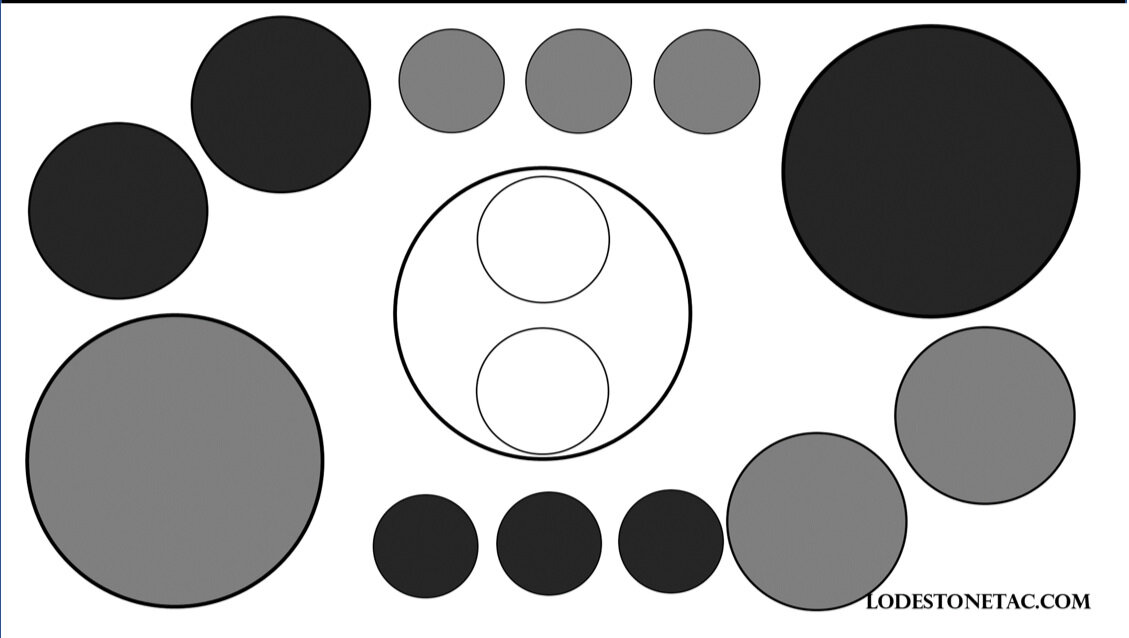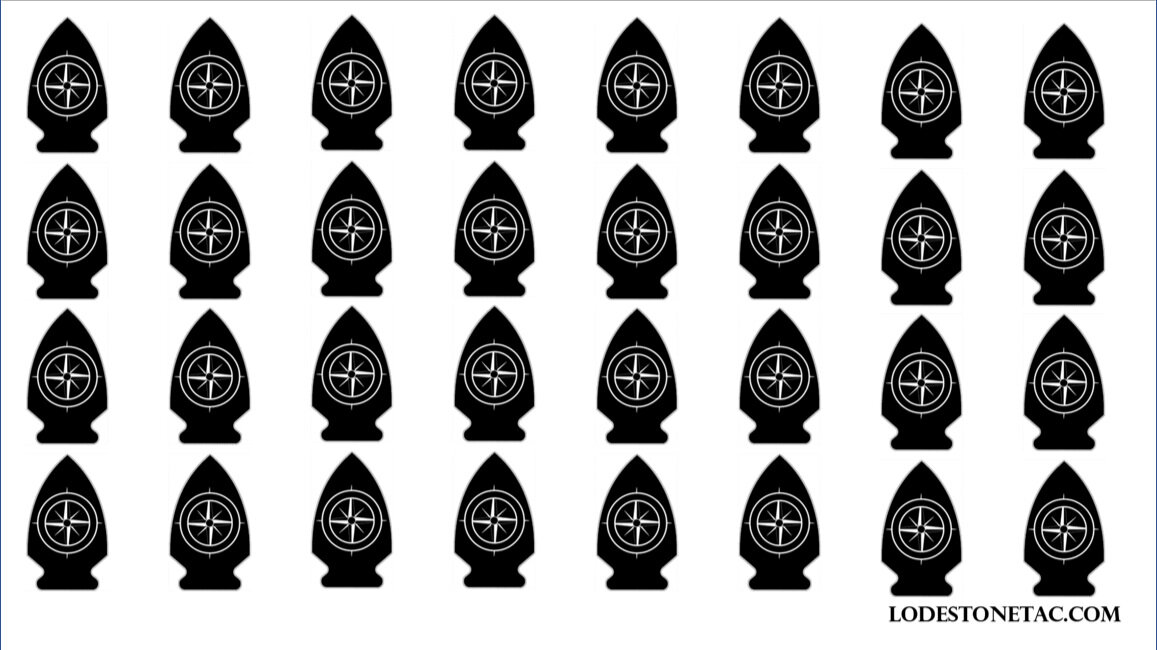Dots
A few years back, while talking with someone who didn’t know my background, he made an interesting statement. He said that real combat shooters only use “tactical combat targets.” I’m not sure what that is. But he proceeded to tell me that bull’s-eyes and dot targets have no place in combat shooting or real-world training. I kept my game face on and listened to him talk. After that conversation, I did a little looking and to my surprise I found that there are plenty of others who have this same belief. I don’t claim to know everything about shooting -- anyone that does is a fool. I just consider myself a student of the gun. I am always open to something new. I also believe that the more you understand the “why” of doing something, the better you will execute it. So with that experience I was encouraged to write a short article on why we use dots and bull’s-eyes as part of our normal firearms training.
I believe that dots and bull’s-eyes have a place, and are necessary to become an effective combat shooter. For most of the classes that I teach, I pattern them off of my prior training in SF and my experience in combat. I have also taught at an Army SF CQB school 2 to 3 times a year for about 4 years. So, what I mean is that the Lodestone classes follow the same pattern or template that we use to train the best combat shooters in the world. I stand on the shoulders of giants who have gone before. One of the only real differences is in round count. In the LTAC classes, we may do a drill with just one mag. In the SF class, we would use 4-8 mags for the same drill. It helps when Uncle Sugar is paying for the ammo.
As I stated in an earlier post, a definition of Marksmanship (MMS) is the ability of an individual to develop the basic skills necessary to shoot both rifles and pistols accurately and produce consistent shot groups. So MMS is accurate hits on a desired target. Combat Marksmanship (CMMS), on the other hand, is the ability of an individual to consistently place fast, accurate, and lethal fire on the enemy or threat without hesitation, in adverse conditions, under mental and physical stress. Or to quote Capt. Malcolm Reynolds, “Someone ever tries to kill you, you try to kill 'em right back!”
In order to effectively perform CMMS you first have to know and understand MMS. I won’t go into the 8 principles or fundamentals of shooting at this time. I’ll just assume that you already know them. We regularly use 1-inch, 3-inch and 6-inch dots or shapes to help teach MMS. So, why use a dot? It gives you a definite point to aim at. It allows you to easily recognize your shot group, or more appropriately, shot pattern. When I’m instructing, I’m watching you. I’m watching your stance, grip, how you manage your recoil, anticipation, are you looking over your sights? I rarely look at the target as you shoot; I’m looking at you. After you are done shooting that iteration, I then look at your target and pattern to aid me in evaluating you and help me give you the feedback you need to improve. Where you start to pattern on the dot will translate into what you need to do to improve your overall MMS (hence the plethora of different dot targets with feedback written on the Targets themselves) but it’s best to have someone watch you.
There is so much going on in the mind of a new shooter. An uncluttered, simple target is the best thing for them to use as they focus on the basics. A target with multiple dots is also a good way to track progress as you shoot. If you shoot a specific number of rounds or magazines at one dot, then move to another, you can see how your shot groups change and compare your mistakes. It also gives you the chance to see how much you suck, take a deep breath and move to the next dot, starting over fresh. At first, you want to have as little stress as possible to allow you to concentrate. The time for stress is when you make the transition to CMMS.
So, does using dots have a place after you understand MMS and move on to CMMS? You bet! About half of the time I go to the range I do warm-up drills using dots. The other half of the time are training days that I want to see the cold performance. This too is a good training tool to see where you are at as a shooter.
Those times for an organized warm up, it doesn’t matter if it is Carbine or Pistol. I will take the time to shoot a mag of single shot, followed by a mag of Controlled Pairs, and then a mag of strings of 3-6 rounds in a rhythm. I will usually follow this by a Half-and-Half drill, or something similar. This is all to start the day right and brush off any rust. After this warm-up, we put on kit and go about the day in the Shoot House or whatever is planned. Near the end of the day, I like to shoot the same type of drill as the warm-up. This way, you end on a good note and reinforce correct shooting principles.
If one were to only use silhouette-type targets, or “tactical combat targets” as I was told in my conversation (even if 3D targets are only used to help “Keep it Real”), it is nearly impossible to correctly evaluate the one shooting. This just reinforces sloppiness on the part of the shooter. The student will find it nearly impossible to progress to the point to be able to call their own shots. They will never be able to know what “right“ feels like. Now the key to those statements, and the argument I have been hearing as of late, is ONLY use. These types of targets are just as essential to the overall development of a Combat shooter.
One of the reasons I designed the RTG 1, 2 and 3 targets while I was on active duty was to make a target that would allow my team to seamlessly transition from MMS to CMMS as we shot. I just added the different shapes in place of only dots. So, we can use these targets for a warm-up, and then go immediately into different drills for CMMS.
I am just a student of the gun. I find that the more I go back to the basics, the more I understand about shooting. Continually using dots as a way to evaluate and improve your overall shooting ability is essential if you truly want to become the best that you can be. I suspect that those who don’t find them useful as a tool haven’t really been there and are just trying to be “harder-core than you” to make up for that fact.
Thanks for reading,
Jared Ross




